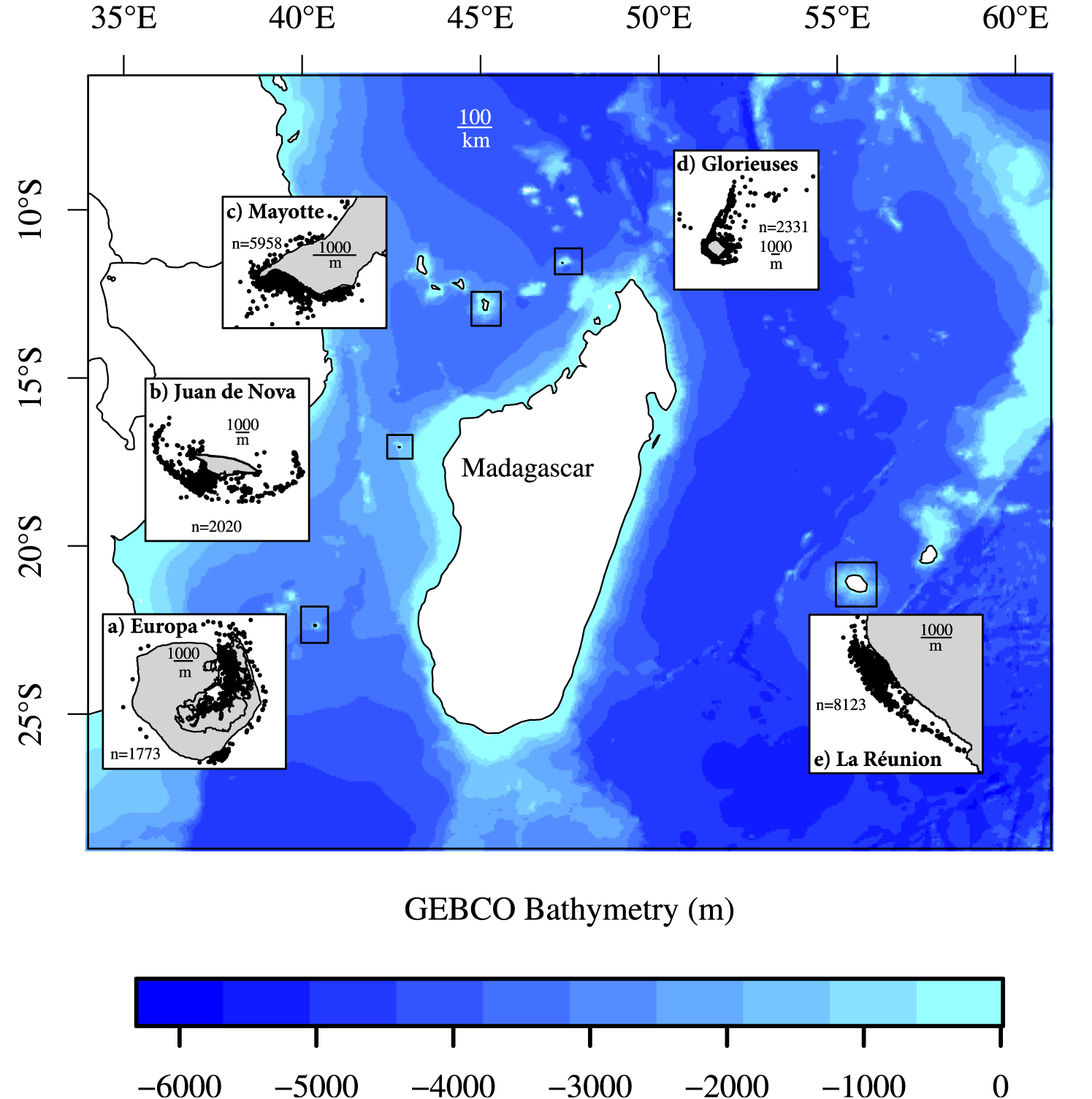← Back
Juvenile green turtle individuals behave differently, satellite telemetry reveals

Tracking the behaviour of a large number of juvenile green turtles in contrasting environments using satellite telemetry enables to show behavioural differences across individuals.
The green turtle (Chelonia mydas) is one of the seven species of sea turtles (with also loggerhead, Kemp Ridley, olive Ridley or leatherback turtles) found in all tropical and subtropical seas around the world, including the Indian Ocean.
Tracked from five different islands in the Indian Ocean
From 2010 to 2018, 49 juvenile green turtles were tracked using Argos satellite telemetry in the South-West Indian Ocean, in five different islands: Europa, Glorieuses and Juan de Nova (isolated islands with only a few scientists or guards) and also Mayotte and La Reunion which are both populated and touristic islands, representing contrasting habitats with different anthropogenic conditions. Only two turtles left Europa, while the remaining turtles remained close to their release site, in the coastal waters of the islands.
More info about animal tracking with Argos

The five islands where the juvenile green turtles were tagged and satellite tracked. (from [Chambault et al, 2020])
Behavioural differences between individuals
The focus of this meta-analysis was to investigate the day/night patterns in their behaviours the differences between sites and across individuals, and the potential environmental drivers of these behaviours. Depth, distance to shore, seafloor habitats and tides were used as potential drivers of their movements. Diurnal and nocturnal home ranges were also estimated from the GPS locations.
Results show that globally the juvenile turtles use small home ranges (0.21 ± 0.27km²), showing a strong site fidelity to their foraging habitats. A general result is also that turtles disperse more during the day (larger home ranges), but with noticeable differences between individuals. In Glorieuses, for example, the average distance to shore ranges between 0.24 and 4.31 km. The smaller home ranges found at night are in line with the hypothesis that sea turtles are decreasing their activity at night. On a given island, the turtles selected different habitats (e.g. mangrove, reef flat, fore-reef, terrace) associated with contrasting resources (coral, seagrass, algae).

Individual kernel densities (50% contours) during day and night for (a,b) Europa, (c,d) Glorieuses, (e,f) Juan de Nova, (g,h) Mayotte and (I,j) La Reunion. The green lines in each figure refer to the 10 m isobaths (from [Chambault et al, 2020])
Behavioural plasticity
If some similarities were observed especially in the day/night patterns, the differences between sites and individuals are more striking, showing a potential behavioural plasticity of this species. Reasons might be related to the personality or experience of each individual , but also to the local conditions of each site. Indeed, the contrasted habitats and resources found on each of the five sites might also contribute to this behavioural variability, highliting the ability of juvenile green turtles to adapt to the imminent modifications of its habitat.
Reference & Link
- Philippine Chambault, Mayeul Dalleau, Jean-Benoît Nicet, Pascal Mouquet, Katia Ballorain, Claire Jean, Stéphane Ciccione and Jérôme Bourjea, 2020: Contrasted habitats and individual plasticity drive the fine scale movements of juvenile green turtles in coastal ecosystems, Movement Ecology, (2020) 8:1, https://doi.org/10.1186/s40462-019-0184-2
Photo: Green turtle with an Argos PTT (credit E. Lancelot)

